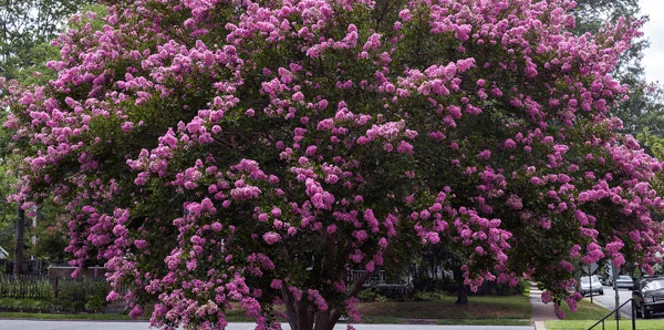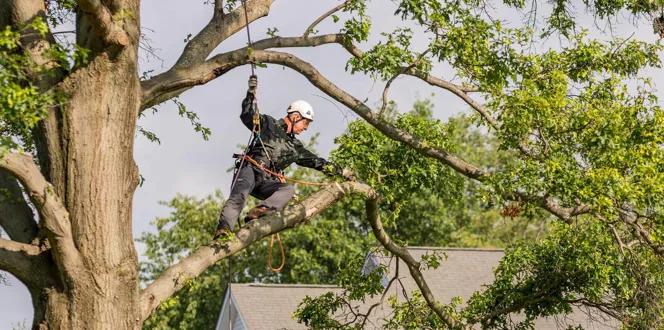With trees bare in the dormant season, now’s the best time to see which branches need a shape up.
Knowing it’s time to trim trees often leads to a few other questions. For instance, Megan, a Davey blog reader and first-time homeowner, was wondering what tree trimming tools she should own.
Since Davey has been cutting and pruning trees for 135-plus years, we can help with this one! Below, learn the best tree trimming equipment and tools you should have on hand for those minor touch-ups.
3 Must-Have Tools For Trimming Trees
The three tools below are recommended for simple, small cuts. These tree trimming tools only cut smaller branches.
1. Pruning Shears For Simple, Clean Cuts On Bushes Or Thin Tree Twigs
Also called hand pruners, pruning shears are perfect for cutting small twigs, up to 1/2 inch in diameter.
To touch up small, live branches, look for bypass pruning shears. The tool resembles a pair of scissors and is good for trimming twigs at awkward angles. Anvil pruning shears have a straight, knife-like edge and should only be used on dead twigs.
2. Loppers For Medium-Sized Branches
With a longer handle and sturdier blade, loppers can cut branches up to 2 inches thick.
Like pruning shears, loppers come as anvil or bypass. Anvil loppers can harm live branches, so opt for bypass loppers unless you’re cutting dead limbs.
3. Pole Pruner For The Hard-To-Reach Branches On Trees
Pole pruners extend 10 to 15 feet to reach deadwood in any tree. Look for a pole pruner with both a bypass blade and pruning saw. The bypass blade can handle branches about 2 inches thick while the saw trims slightly larger limbs.
When To DIY Tree Trimming Or Call A Professional
If you do it correctly, there’s no harm in minorly shaping your trees between annual pruning appointments with your arborist.
More advanced jobs should be left to a certified arborist. Tree trimming can be a dangerous task, so keep these things in mind to ensure you and your property remain safe:
Do not attempt to prune branches near power lines.
Avoid climbing a ladder to reach branches at risky heights. If you can’t comfortably reach a limb with an extended pole pruner, call an arborist.
Don’t attempt to cut branches that are too thick for your pruning tools. Those types of cuts require heavy-duty arborist equipment.





